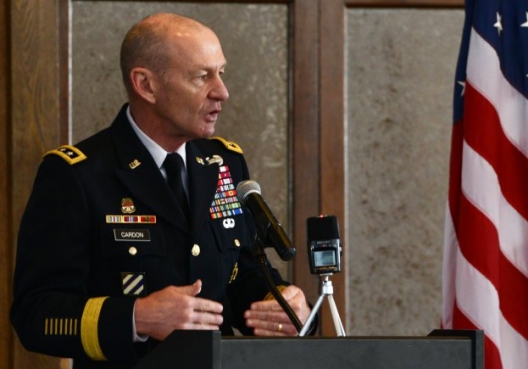 An unprecedented Pentagon cyber-offensive against the Islamic State has gotten off to a slow start, officials said , frustrating Pentagon leaders and threatening to undermine efforts to counter the militant group’s sophisticated use of technology for recruiting, operations and propaganda….
An unprecedented Pentagon cyber-offensive against the Islamic State has gotten off to a slow start, officials said , frustrating Pentagon leaders and threatening to undermine efforts to counter the militant group’s sophisticated use of technology for recruiting, operations and propaganda….
In an effort to accelerate the pace of digital operations against the Islamic State, the Cybercom commander, Adm. Michael S. Rogers, created a unit in May headed by Lt. Gen. Edward Cardon that is tasked with developing digital weapons — fashioned from malware and other cyber-tools — that can intensify efforts to damage and destroy the Islamic State’s networks, computers and cellphones.
The group, called Joint Task Force Ares, is coordinating operations more closely with U.S. Central Command, which is leading the military fight, and working to sharpen offensive operations.
Defense Secretary Ashton B. Carter has pressed Rogers repeatedly to pick up the pace of the nascent cyber-offensive, ensuring it plays a more active role in the overall campaign against the Islamic State.
“Cybercom has not been as effective as the Department would expect them to be, and they’re not as effective as they need to be,” said a senior defense official who, like other officials, spoke on the condition of anonymity to discuss internal conversations. “They need to deliver results.”
Although officials declined to detail current operations, they said that cyberattacks occurring under the new task force might, for instance, disrupt a payment system, identify a communications platform used by Islamic State members and knock it out, or bring down Dabiq, the Islamic State’s online magazine.
It is not, however, part of the group’s mission to identify individuals to be targeted by American airstrikes, officials said….
The simple fact that the Pentagon has ordered its first major cyber-offensive campaign, and has acknowledged it publicly, is a milestone.
“Here you’ve got a real first time where you have a state saying, ‘We did this — we’re using cyber on the battlefield,’ ” said Jason Healey, a senior research scholar in cyber-conflict at Columbia University and a former military cyber-operator. “Without a doubt, this is the first time we’re seeing this in history….”
Military cyber-specialists conducted tactical operations in Iraq and, to a lesser extent, in Afghanistan toward the end of the George W. Bush administration, but the communications environment has changed significantly, officials said. The techniques used then were simpler than those being planned today, they said. “Terrorist organizations use the most modern comms,” the senior defense official said. “They know that people are after them, and so they spend a lot of time protecting themselves” through the use of encryption, for example.
Carter announced a cyber-strategy last year that for the first time addressed the use of cyber-weapons in combat and the need to be transparent about their use. But he was unhappy with the effectiveness of the early efforts against the Islamic State, leading to the creation of the dedicated unit led by Cardon.
Cardon’s task force is headquartered at Fort Meade, Md., which is also the headquarters for Cybercom and the National Security Agency. The unit comprises about 100 people, including intelligence personnel and staff from across the military.
One key aim of the group is to be more closely integrated with the overall military campaign against the Islamic State, officials said.
This would allow Lt. Gen Sean MacFarland, who oversees operations in Iraq and Syria, to work cyberattacks into his battle plan, just as he uses airstrikes. At times, officials said, commanders may choose to use a cyberattack when it will reduce the odds of civilian casualties; an example of this is disabling a communications network by digital means rather than bombing it.
Image: Gen. Edward Cardon, commander of U.S. Army Cyber Command and Second Army, April 21, 2016 (photo: David Vergun/US Army)

